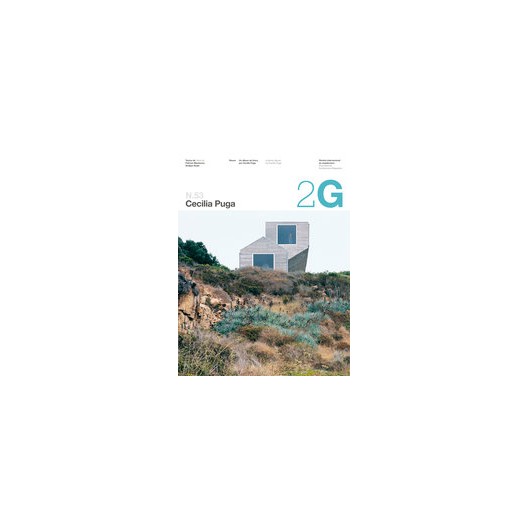- Rupture de stock



Cecilia Puga received her architectural degree from the Pontificia Universidad Católica de Chile in Santiago, having already studied restoration at the Università degli Studi “La Sapienza” in Rome.
 Garanties sécurité
Garanties sécurité
(à modifier dans le module "Réassurance")
 Politique de livraison
Politique de livraison
(à modifier dans le module "Réassurance")
 Politique retours
Politique retours
(à modifier dans le module "Réassurance")
''I would like to find a little path, somewhat tangential, somewhat marginal, to continue down, so as not to get bored.'
Tadeusz Kantor
The projects presented here respond to particular circumstances and reflect the issues that the professional life of the architect raises.
The first issue refers to the programme and the degree of programmatic precision assumed by the structure that contains it. In general terms, these projects aim at being sufficiently generic to transcend a precise cultural, temporal, geographic demand. In that sense, one seeks to go beyond the ‘ergonomic’ nature of the commission and to guarantee a rootedness beyond the reach of the archetypal assignment, without falling into hygienic anonymity.
This fact causes a number of problems that have to be resolved in each project: how to generate a matrix sufficiently open as to permit changes in long-term use; what the basic minimum and non-negotiable elements are; and which of these elements might undergo change in order to adapt a given structure to the given reality.
That a particular structure permits and encourages future developments, at the same time as guaranteeing a certain flexibility, seems essential both from the point of view of the optimization of the resources that must be invested and in terms of the dialogue between the user and the infrastructure that receives it -an infrastructure that necessarily will unfold in time. Due to all this, the projects try to be less about narrative and more constructional.
The second issue refers to how, aside from being the organizer of the space and the material, the conception of the structure often constitutes the final image of the design. The basic structure of the building is always a design concern, the subject of architecture -not just of engineering- a provider of meaning and the point where environmental experience and the building’s atmosphere resides or is deposited. The minimum articulation, the monolithic construction, the basic form, and the dialogue between stability and mass in suspension, not only form some of the keys to understanding how structural stresses are transmitted -they constitute the plastic proposition of the building. The building attempts to put a roof over things and is capable of constructing interiors relatively independent of the context and the views.
‘Architecture as body, not as the idea of body, a body that can be touched’ (Peter Zumthor)
Linked to the above, the third and final issue concerns the search for a certain plastic continuity, at times thanks to a work of hollowing out without articulations and to the use of a reduced chromatic and material range.
All these issues respond to the desire to concentrate forces in a minimum number of points, thus guaranteeing a minimal, purified persistence when it comes to being covered and uncovered. This means designs that are sparing in formal elements, concrete in the technique employed, and that try to avoid militant affiliation to a given historical or formal moment.
Table of contents: Introductions Three notes by Patricio Mardones When aridity... by Smiljan Radic Note from Cecilia Puga Works and Projects Country house, Marchigue Country house and chapel, Mulchén Cono Sur Winery, Chimbarongo House in Bahía Azul House 6, Ochoalcubo, Marbella Weekend house, San Francisco de Los Andes Apartment building on Plaza Pedro Montt, Santiago Sergio Larrain García Moreno Documentation Centre, Providencia Neyen de Apalta Winery, Colchagua Collapsable room Toro Hill, Valparaíso Shelter in Patagonia KM5 House, on the road to Farellones Corporación Andina de Fomento (CAF), Caracas House in Ordos 100 Los Trapenses House, Santiago Hotel Indigo, Santiago Biography Nexus A photo album by Cecilia Puga |
Fiche technique